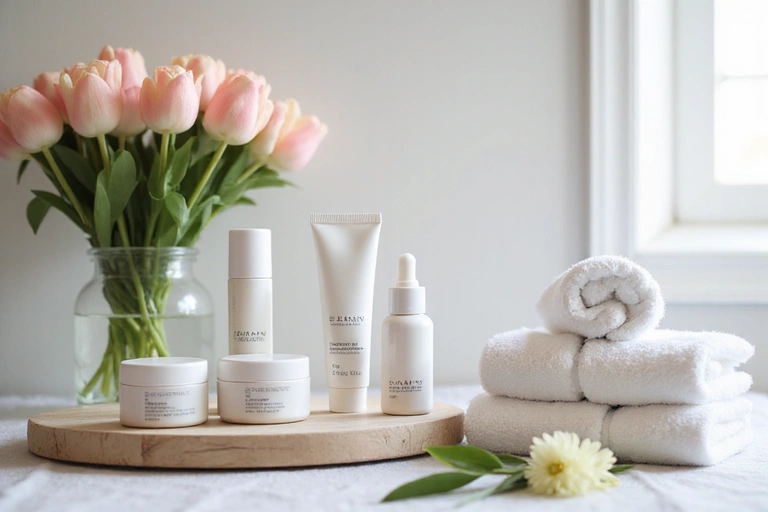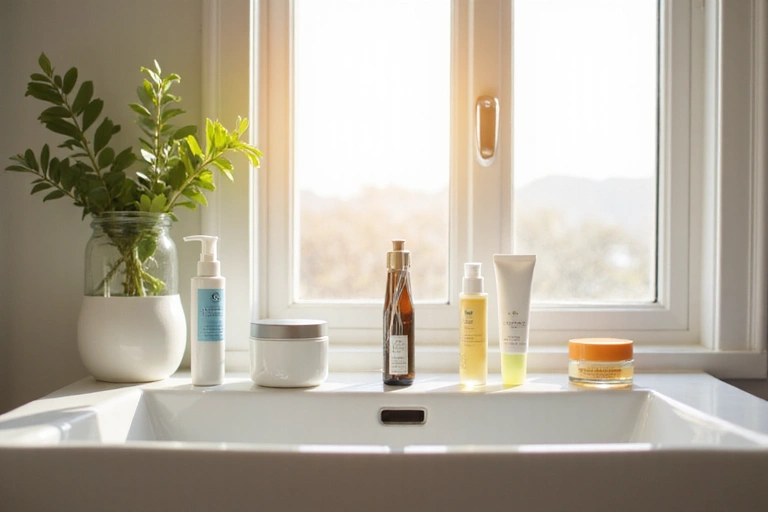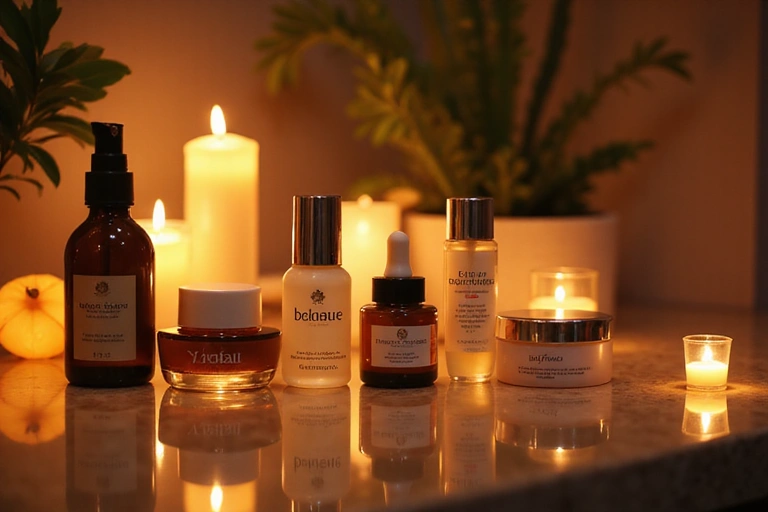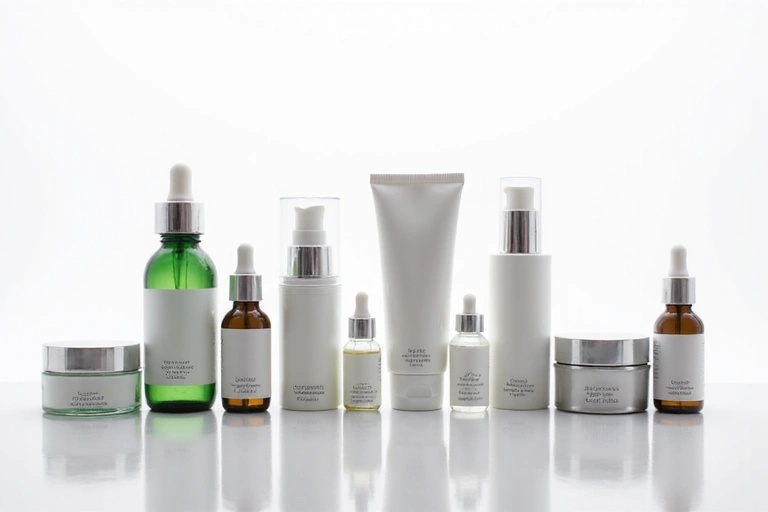Simple Facial Care Routines for Youthful Skin
Discover the essential steps and products to maintain radiant, youthful skin with our comprehensive guide to facial care routines.

Understanding Your Skin Type
Before embarking on any facial care routine, it is essential to understand your unique skin type. Your skin type determines which products and treatments will be most effective for achieving and maintaining youthful, radiant skin. The main skin types include oily, dry, combination, sensitive, and normal skin, each with distinct characteristics and specific care requirements.
Oily skin tends to produce excess sebum, leading to a shiny appearance and a higher tendency toward acne and breakouts. Dry skin lacks moisture and often feels tight, flaky, or uncomfortable. Combination skin exhibits both oily and dry areas, typically with an oily T-zone and drier cheeks. Sensitive skin reacts easily to products and environmental factors, often becoming red, irritated, or inflamed. Normal skin is well-balanced, neither too oily nor too dry, and generally resilient to various products and conditions.
Understanding your skin type allows you to select the most appropriate facial care products and establish a routine that addresses your specific needs. This personalized approach is fundamental to achieving the best results and maintaining healthy, youthful-looking skin over time.
Pro Tip:
If you're unsure about your skin type, observe how your skin feels throughout the day. Does it feel tight and uncomfortable? Do you notice shine by midday? Does it feel balanced? These observations will help you identify your skin type accurately.
The Foundation: Morning Skincare Routine
A consistent morning skincare routine sets the foundation for healthy, youthful skin throughout the day. The morning routine should be relatively quick and efficient, preparing your skin for makeup application and environmental exposure while maintaining hydration and protection.
Step 1: Gentle Cleansing
Begin your morning routine with a gentle cleanser appropriate for your skin type. A mild, pH-balanced cleanser removes overnight oil buildup, dead skin cells, and environmental impurities without stripping your skin of essential moisture. Use lukewarm water and massage the cleanser gently onto your face for about 30-60 seconds, then rinse thoroughly. This crucial first step prepares your skin to absorb subsequent products more effectively.
Step 2: Toning and Balancing
After cleansing, apply a toner or essence to rebalance your skin's pH levels and provide hydration. Toners help remove any remaining impurities and prepare your skin for the absorption of serums and moisturizers. Pat the toner gently onto your face using a cotton pad or by gently pressing it into your skin with your fingertips. This step is particularly beneficial for those with oily or combination skin types.
Step 3: Targeted Serums and Treatments
Apply a serum or treatment product that addresses your specific skin concerns. Whether you're targeting fine lines, dark spots, uneven texture, or dehydration, serums deliver concentrated active ingredients directly to your skin. Use just a few drops and gently press them into your skin, allowing them to absorb for a minute before proceeding to the next step. Quality serums are a cornerstone of skin rejuvenation products that visibly improve skin appearance over time.
Step 4: Moisturizing with Facial Cream
Apply a lightweight, hydrating facial cream appropriate for your skin type. A good facial cream locks in moisture, provides essential nutrients, and creates a protective barrier against environmental stressors. For morning routines, choose a faster-absorbing formula that won't leave your skin feeling greasy under makeup. Massage the cream gently into your face and neck using upward motions to promote circulation and absorption.
Step 5: Sun Protection
Finish your morning routine with a broad-spectrum sunscreen with at least SPF 30. Sun protection is the most important anti-aging step you can take, as UV damage is the primary cause of premature aging, including wrinkles, age spots, and loss of elasticity. Apply sunscreen generously to your face, neck, and any exposed areas, and reapply every two hours if you're spending time outdoors.

Evening Skincare Routine: Repair and Rejuvenation
Your evening skincare routine is when your skin enters repair mode, making it the perfect time to use more intensive treatments and skin rejuvenation products. The evening routine can be more elaborate than the morning routine, allowing time for richer formulations and targeted treatments to work while you sleep.
Step 1: Makeup Removal and Deep Cleansing
Begin your evening routine by removing makeup and daily buildup. Use a gentle makeup remover or cleansing oil that effectively dissolves makeup without harsh scrubbing. Follow with a second cleanse using your regular facial cleanser to ensure all impurities are removed. This double-cleanse method is particularly important if you wear makeup daily, as it ensures your skin is thoroughly clean and ready to absorb evening treatments.
Step 2: Exfoliation (2-3 times per week)
Two to three times per week, incorporate a gentle exfoliant into your evening routine. Exfoliation removes dead skin cells, promotes cell turnover, and allows subsequent products to penetrate more deeply. Choose between chemical exfoliants (AHAs, BHAs) which are generally gentler and more effective, or physical exfoliants (gentle scrubs, brushes) depending on your skin sensitivity. Avoid over-exfoliation, which can damage your skin barrier and cause irritation.
Step 3: Intensive Serums and Treatments
Apply more concentrated serums and treatment products in the evening. This is the ideal time to use products containing retinol, vitamin C, peptides, or other potent anti-aging ingredients that work best when you're not exposed to sunlight. These skin rejuvenation products work throughout the night to repair damage, stimulate collagen production, and improve skin texture and appearance.
Step 4: Rich Night Cream or Facial Cream
Finish your routine with a rich, nourishing night cream or facial cream designed for overnight use. Night creams are typically thicker and more emollient than day creams, providing deep hydration and intensive nourishment while you sleep. Look for formulations with ingredients like hyaluronic acid, peptides, antioxidants, and botanical extracts that support skin repair and rejuvenation. Apply generously to your face and neck, and allow it to absorb before sleeping.
Step 5: Eye Cream (Optional but Recommended)
The delicate eye area requires special attention, as the skin here is thinner and more prone to showing signs of aging. Apply a dedicated eye cream using your ring finger, gently patting it around the orbital bone. Eye creams address specific concerns like dark circles, puffiness, fine lines, and loss of elasticity in this sensitive area.

Weekly Intensive Treatments
In addition to your daily routine, incorporating weekly intensive treatments amplifies your skin rejuvenation efforts and addresses specific concerns more effectively. These treatments work synergistically with your daily routine to maintain youthful, radiant skin.
Face Masks for Deep Hydration
Use a hydrating face mask once or twice weekly to provide an intensive moisture boost. Sheet masks, cream masks, or gel masks deliver concentrated serums directly to your skin, improving hydration, plumpness, and radiance. Leave the mask on for 15-20 minutes, allowing the active ingredients to penetrate deeply. This is an excellent time to relax and let your facial cream and mask work their magic.
Clay or Purifying Masks
If you have oily or combination skin, incorporate a clay or purifying mask once weekly to remove excess oil, unclog pores, and detoxify your skin. These masks help prevent breakouts and improve skin texture. Leave on for 10-15 minutes, then rinse thoroughly with lukewarm water. Follow with your regular moisturizer to prevent over-drying.
Overnight Masks and Sleep Serums
Overnight masks and sleep serums are excellent additions to your weekly routine, providing intensive treatment while you sleep. These products are designed to remain on your skin throughout the night, delivering maximum hydration and nourishment. They're particularly effective for addressing dryness, dullness, and signs of aging.
Key Ingredients for Youthful Skin
Understanding the key ingredients in your skincare products helps you select the most effective formulations for your skin concerns. The following ingredients are proven to support skin rejuvenation and maintain youthful appearance:
Retinol and Retinoids
Vitamin A derivatives that stimulate collagen production, reduce fine lines and wrinkles, improve skin texture, and fade age spots. Start with lower concentrations and gradually increase as your skin builds tolerance.
Hyaluronic Acid
A powerful humectant that holds up to 1000 times its weight in water, deeply hydrating skin and plumping fine lines. Essential for maintaining skin moisture and elasticity.
Vitamin C
A potent antioxidant that brightens skin, reduces dark spots, boosts collagen production, and protects against environmental damage. Improves overall skin radiance and youthfulness.
Peptides
Amino acid chains that support collagen and elastin production, improving skin firmness and elasticity. Help reduce the appearance of fine lines and wrinkles.
Niacinamide (Vitamin B3)
Strengthens the skin barrier, reduces pore size, minimizes redness, and improves skin texture. Also helps regulate sebum production and is suitable for all skin types.
Antioxidants
Including green tea, resveratrol, and ferulic acid, these protect skin from free radical damage, reduce inflammation, and support skin rejuvenation processes.
Lifestyle Factors That Support Skin Health
While a comprehensive facial care routine is essential, lifestyle factors play an equally important role in maintaining youthful, healthy skin. These complementary practices enhance the effectiveness of your skincare products and promote long-term skin health.
Hydration and Nutrition
Drinking adequate water throughout the day is fundamental to skin health. Water helps flush toxins, maintains skin elasticity, and ensures proper nutrient delivery to skin cells. Additionally, consuming a diet rich in antioxidants, healthy fats, and vitamins supports skin rejuvenation from within. Include foods like fatty fish, berries, leafy greens, nuts, and seeds to provide your skin with essential nutrients.
Sleep Quality
During sleep, your body increases blood flow to the skin and rebuilds collagen, making quality sleep crucial for maintaining youthful appearance. Aim for 7-9 hours of quality sleep nightly. Poor sleep increases cortisol levels, which can trigger inflammation and accelerate aging. Establish a consistent sleep schedule and create a relaxing bedtime routine to support both skin health and overall wellbeing.
Stress Management
Chronic stress elevates cortisol levels, which can trigger inflammation, breakouts, and accelerated aging. Practice stress-reduction techniques such as meditation, yoga, deep breathing, or regular exercise to support skin health. Managing stress not only improves your skin but also enhances overall quality of life.
Regular Exercise
Physical activity increases blood circulation, delivering oxygen and nutrients to skin cells while promoting the removal of toxins through sweat. Exercise also reduces stress and improves sleep quality, both beneficial for skin health. Aim for at least 150 minutes of moderate exercise weekly to support skin rejuvenation and overall health.
Environmental Protection
Protect your skin from environmental stressors including UV radiation, pollution, and harsh weather. Always wear sunscreen, consider using antioxidant serums to combat pollution damage, and protect your skin during extreme weather conditions. These protective measures prevent premature aging and maintain the results of your skincare routine.
Common Skincare Mistakes to Avoid
Even with the best intentions, skincare mistakes can undermine your efforts to maintain youthful skin. Being aware of these common pitfalls helps you optimize your routine and achieve better results.
-
•
Over-cleansing
Washing your face more than twice daily or using harsh cleansers can strip your skin of natural oils, compromising your skin barrier and leading to dryness, irritation, and increased oil production.
-
•
Skipping Sunscreen
UV damage is the leading cause of premature aging. Skipping sunscreen, even on cloudy days, accelerates aging and increases skin cancer risk. Make sunscreen non-negotiable in your routine.
-
•
Using Too Many Products
Adding too many products at once can overwhelm your skin, cause irritation, and make it difficult to identify which products are working. Build your routine gradually and introduce new products one at a time.
-
•
Inconsistency
Skincare results require consistency. Skipping steps or changing products frequently prevents you from seeing real results. Commit to your routine for at least 4-6 weeks before evaluating effectiveness.
-
•
Ignoring Neck and Décolletage
The neck and chest area are often neglected but are prone to showing signs of aging. Extend your skincare routine to these areas for comprehensive anti-aging benefits.
-
•
Using Expired Products
Expired skincare products lose potency and may harbor bacteria or develop harmful compounds. Check expiration dates and replace products as needed, typically every 6-12 months depending on the product.
Customizing Your Routine for Different Skin Concerns
While the basic routine structure remains consistent, you can customize your products and treatments to address specific skin concerns more effectively. This personalized approach maximizes the benefits of your skincare routine.
For Fine Lines and Wrinkles
Focus on products containing retinol, peptides, and vitamin C. These ingredients stimulate collagen production and improve skin firmness. Use a rich facial cream to maintain hydration, as dehydrated skin appears more wrinkled. Consider incorporating a facial cream specifically formulated for mature skin with advanced skin rejuvenation products.
For Hyperpigmentation and Dark Spots
Use serums containing vitamin C, niacinamide, and kojic acid to fade discoloration. Consistent use of sunscreen is crucial to prevent new spots from forming. Gentle exfoliation helps remove pigmented dead skin cells, revealing brighter skin beneath.
For Acne-Prone Skin
Choose lightweight, non-comedogenic products that won't clog pores. Incorporate salicylic acid or benzoyl peroxide for acne treatment, and use a light gel or lotion moisturizer rather than heavy facial cream. Look for skin rejuvenation products specifically formulated for acne-prone skin.
For Sensitive Skin
Use gentle, fragrance-free products and avoid harsh actives like strong retinoids or high-concentration acids. Focus on barrier repair with products containing ceramides, hyaluronic acid, and soothing ingredients like centella asiatica. A good facial cream is essential for maintaining skin barrier integrity.
For Dull or Tired-Looking Skin
Use brightening serums with vitamin C and niacinamide, and incorporate gentle exfoliation to promote cell turnover. Hydrating masks and rich facial creams restore radiance. Ensure adequate sleep and hydration, as these significantly impact skin appearance.

Professional Treatments to Complement Your Routine
While a consistent at-home routine is fundamental, professional treatments can accelerate results and address specific concerns more intensively. These treatments work synergistically with your daily facial care routine and skin rejuvenation products.
Professional Facials
Monthly or quarterly professional facials provide deep cleansing, exfoliation, and intensive treatment that exceeds what home routines can achieve. Estheticians can customize treatments to your skin type and concerns, using professional-grade products and equipment. Regular facials enhance the effectiveness of your at-home routine and provide visible improvements in skin texture, tone, and radiance.
Chemical Peels
Chemical peels use acids to exfoliate the skin more deeply than at-home treatments, promoting cell turnover and collagen production. They're particularly effective for addressing fine lines, dark spots, and uneven texture. Professional-grade peels provide more dramatic results than home peels, though they require proper aftercare.
Microneedling
Microneedling creates controlled micro-injuries that stimulate the body's natural healing response, promoting collagen and elastin production. This treatment is highly effective for reducing fine lines, improving skin texture, and enhancing the absorption of serums and facial creams. Multiple sessions are typically recommended for optimal results.
Laser and Light Therapies
Various laser and light-based treatments address specific concerns like sun damage, age spots, redness, and skin laxity. These treatments stimulate collagen production and improve overall skin appearance. Professional guidance is essential to determine which treatment is most suitable for your skin type and concerns.
Injectables and Dermal Fillers
While more invasive, injectables like Botox and dermal fillers can address deep wrinkles and volume loss. These treatments are best combined with a comprehensive skincare routine to maximize results and maintain skin health. Consult with a qualified dermatologist or aesthetician to determine if these treatments align with your goals.
Building Your Personalized Skincare Routine
Creating an effective facial care routine requires understanding your skin and selecting products that address your specific needs. Follow this step-by-step process to build a personalized routine that delivers results:
Step 1: Identify Your Skin Type
Observe your skin for one week without using any active treatments to determine your true skin type. Note oiliness, dryness, sensitivity, and any specific concerns.
Step 2: Determine Your Primary Concerns
List your main skin concerns in order of priority. Are you most concerned about aging, acne, sensitivity, dryness, or hyperpigmentation? This helps guide product selection.
Step 3: Start with the Basics
Begin with essential products: a gentle cleanser, hydrating toner, moisturizer appropriate for your skin type, and sunscreen. Establish this basic routine before adding more